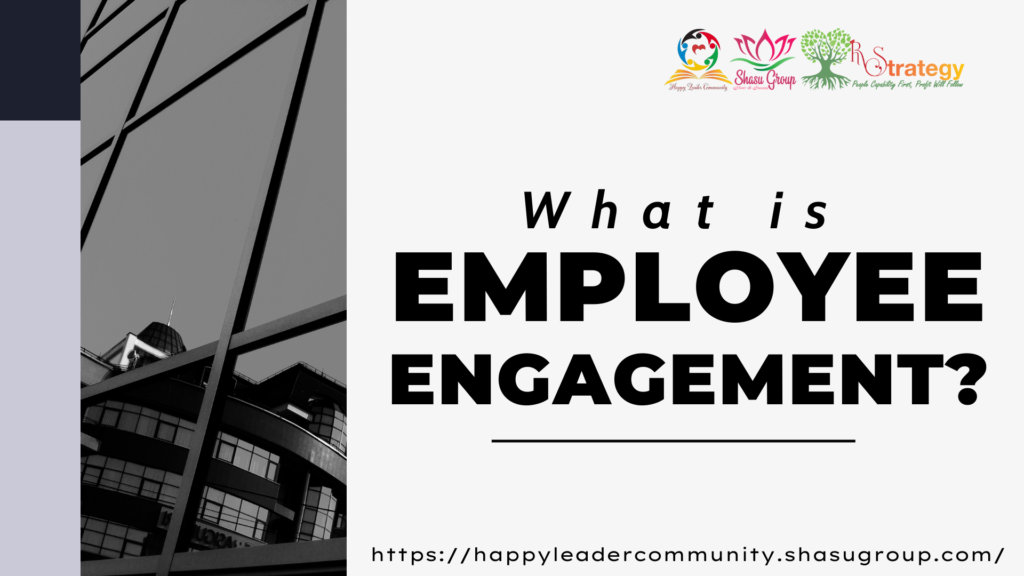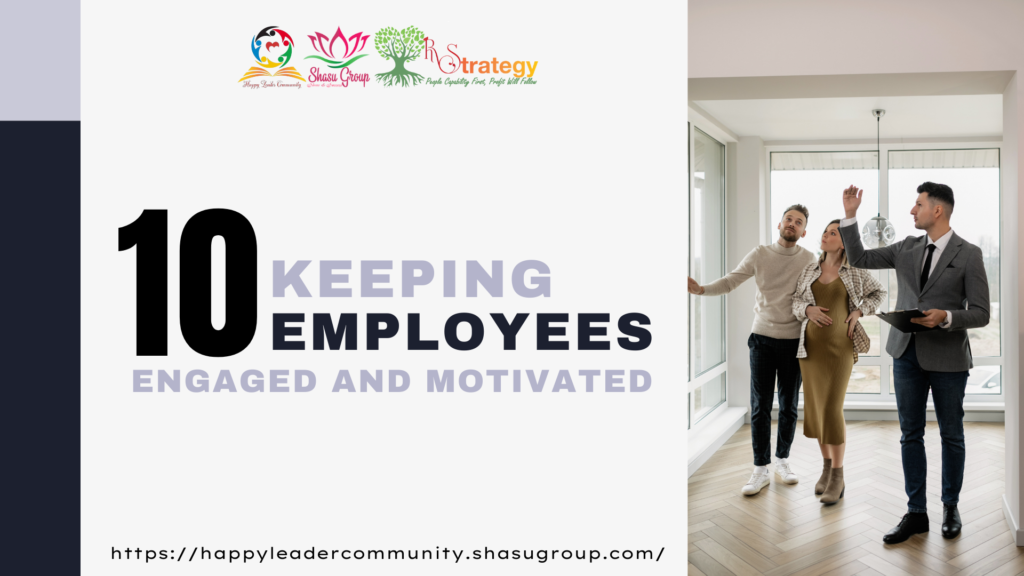What Is Employee Motivation?
There are two kinds of motivation: intrinsic and extrinsic. Managers need to understand the difference and provide both types to effectively motivate employees.
Intrinsic Motivation
Intrinsic motivation is the internal drive an employee feels. When employees are intrinsically motivated, performing their work roles is inherently satisfying to them. Satisfaction might take the shape of overcoming a challenge, enthusiasm for the work itself, or a sense of pride in contributing to a worthy goal.
Because emotional connection and satisfaction overlap, intrinsic motivation is the type of motivation most commonly associated with employee engagement. A properly executed engagement strategy should provide employees with intrinsic motivators. Meaningful work, access to necessary resources, and clearly defined metrics for success all foster intrinsic motivation in employees.
Extrinsic Motivation
Extrinsic motivation is generated through the external factors that drive an employee. Extrinsic motivators can be short-term, like a prize for a top-performing employee of the month, or long-term, such as a prospective raise or promotion.
Extrinsic motivators can significantly improve productivity under certain conditions, but only when used in moderation. For example, a company could use overtime pay to encourage meeting a tight deadline or seasonal demand. According to SHRM, incentive and recognition programs reduce attrition and improve customer service, among other positive business outcomes.
Punishments or the withholding of a positive motivator are examples of negative motivation, for instance, reprimands from a manager or the loss of an expected raise or promotion. Negative motivators may positively impact productivity in the short term, but are detrimental to employee engagement and tend to increase attrition in the long term. They should be used sparingly in the workplace, if ever.
What Is Employee Engagement?

Employee engagement characterizes the relationship between organizations and their employees. Engagement metrics measures employee commitment and dedication to the company, its values, and its central mission. First coined in the early 1990s by professor of organizational behavior William Kahn, employee engagement has been embraced by many organizations today who have embedded it into their HR initiatives and overall strategy for improving business outcomes.
Xem thêm về các nhóm của chúng tôi tại đây
Multiple employee experience and perspective factors go into measuring engagement including:
- Pride in the organization: Employees who believe in the company’s values are more likely to be invested in its central mission and to act as brand ambassadors.
- Leadership: Engagement starts at the top. When leaders are present and involved in daily efforts, employees are inspired to contribute to the collective goal.
- Management style: How managers and employees interact and relate has a major impact on engagement. Managers need to provide their team with support and guidance to keep them engaged.
- Advancement opportunities: When employees can see a clear path for advancement ahead of them, investing in the organization and in themselves become synonymous.
- Autonomy and resources: Engagement increases when employees are given the right tools to do their jobs. Clearly-defined responsibilities and metrics for success empower employees to work autonomously, which fosters a sense of satisfaction in their work.
- Well-being: When organizations invest in their employees’ physical and mental health and promote balance between employees’ work and personal lives, employees are more likely to commit to the organization.
- Office culture: Employees form stronger connections with their organization as a whole when they bond individually with coworkers, and engagement increases when there is a genuine sense of community in an organization.
- Diversity: The strong link between diversity and employee engagement indicates that diverse teams are collaborative and committed and that employees are more likely to feel proud of an organization that is inclusive.
When employees are engaged, productivity increases, turnover is reduced, and there are even fewer employee mistakes and accidents on the job. In contrast, disengaged employees can cost national economies billions every year.
Engagement And Motivation At Work
Remember, engagement and motivation are different. You could have a highly motivated employee in your organization who is not actively engaged. That’s a problem because motivated, disengaged employees are likely to leave the company in search of better opportunities, or simply another employer with better engagement practices.
You could also have an employee who is engaged but not motivated. They have formed bonds at work and believe in the overall mission, but there’s no direct incentive for them to contribute as an individual when they already derive a sense of accomplishment from group initiatives.
Ideally, employers should use employee engagement strategies that include extrinsic positive motivators while also creating the right conditions for intrinsic motivation.
Importance Of Motivation And Engagement
One of the many roles as an employer is to inspire and motivate to maximize the performance of the team. The best leaders in the workplace understand that to build a winning culture, you need to inspire those you lead to do great work for the love of the work itself and not just for a reward or a bonus.
It’s important to make your employees feel that they are a part of a team. Ensuring your employees feel part of a team is vital for engagement and it’s down to how you as an employer get involved in the workplace.
Employees contributions, whether big or small- praise their efforts, not the outcome. An example could be when a member of the sales team makes a sale, it is easy to focus your praise on achievement alone and often those that were the first point of contact (those who give the first impression). Everyone plays a part in business and should be made to feel important and valued for their job.
If an employee is improving, their motivation grows. Give them the opportunity to learn and grow their skills. Whether it’s through independent learning, online courses, and even setting them up in workshops. There are so many great ways to learn in this ‘digital age’. These days, people can access a variety of online platforms and materials to build their skills. Making these available to your team will strengthen their performance and attitude about their work.
You need to make them feel assured and comfortable when they approach you, don’t make them feel that they’re wasting your time. Praise them for their hard work and efforts, recognition will make them feel appreciated. Build a relationship with them. Employees care if their employer invests their time in them. Great leaders create bonds that spread among team members. Make the effort. Reach out to them and understand them, their passions, strengths, weaknesses.
10 Steps to Keeping Employees Engaged and Motivated

When it comes to job satisfaction, financial rewards may be lower on the list than most people think. Being happy with your job often depends more on intangibles such as feeling part of a team and feeling valued and appreciated. In fact, these factors consistently outrank money when employees are polled about job satisfaction.
So here are some tips and strategies for motivating and retaining valuable employees. Many of them may sound like common sense, but you would be surprised how many managers neglect to follow them.
- Step 1: Clearly Define Your Vision. Make sure that you communicate your vision to employees and they understand the steps you and they will be taking.
- Step 2: Give Employees The Tools They Need. Do not just assume that each of your employees is receiving all the tools, training, and support they need from supervisors. Check with them personally and find out.
- Step 3: Communicate Constantly. Perhaps the most important part of a good manager’s job is communicating effectively. Creating a culture of communication in which managers and employees share common goals and work together can make a good company great and turn around a non-performing company. Use channels to present your vision to your employees. Make sure to ask questions, and if they are confused, explain it differently.
- Step 4: Get Everyone Engaged. Figure out a way to get all of your employees engaged in planning and decision-making. Ask for input and use their ideas as much as possible so they have a vested interest in seeing the project succeed. This can not only empower and motivate employees but can lead to new and more productive ways of working that normally would be overlooked.
- Step 5: Coach For Success. Feedback is another great motivator. Offer feedback as often as possible instead of waiting for periodic reviews. Both positive and negative feedback should be given immediately to encourage more of the same performance and allow employees to take corrective action. If you can, schedule weekly meetings with individual employees to provide an opportunity to discuss ongoing projects and issues. These meetings do not have to take a lot of time and they can build strong working relationships.
Tham gia cộng đồng học tập suốt đời cùng chúng tôi tại Happy Leader Community
- Step 6: Act Fairly, Respectfully, And Create Trust. Use your judgment, wisdom, and experience to create a supportive environment. When problems arise, analyze the situation, understand the context, and then pass judgment. Respect and trust your team and you will get the same in return. If you make a mistake, apologize and admit you were wrong. This will allow your employees to relate to you better, and they will appreciate your honesty.
- Step 7: Trust And Verify While Making Work Fun. Good bosses pay attention to the big picture and the details and care both about the product as well as employees. A good way to show that is to be involved in the creation process and to pay attention to what is going on. And remember to do this with a smile on your face. Lighten up! Making work fun pays off since people get a lot more done when they are enjoying themselves.
- Step 8: Engage High-Potential Employees. High-potential employees always have other opportunities—even during a recession, and studies show that is they are anxious about their future they will most likely be making plans to leave. To keep them engaged, consider putting more resources into career development and training. Or perhaps you can give them new projects that will help the company adapt to the changing market, grow, and develop.
- Step 9: Be Creative To Avoid Downsizing. An employer that treats employees as true partners makes every effort to avoid layoffs. Employees should be able to trust that management is doing everything possible to retain them including taking voluntary steps to reduce costs. This step may sound far-fetched, but you would be surprised at how reasonable people can be about pay cuts and/or working overtime as part of a crisis strategy if they know it means they still have a job.
- Step 10: Implement Incentive Programs. You should consider incentive programs no matter what kind of business you are in because it has been proven that they motivate employees. And a major benefit is that the cost can be based on actual performance and paid out only after an employee has reached a desired goal. Sending the message that if you do well, you will be rewarded makes a positive impact on the company as a whole and employees will work hard to meet the target.
Collection & Edit by Marketing Dept from Team Happy Leader Community – Shasu Group
Reference:
- https://www.effectory.com/knowledge/why-you-should-be-thinking-about-engagement-and-motivation/
- https://fellow.app/blog/management/ways-to-keep-employees-engaged-and-motivated/
- https://www.effectory.com/knowledge/why-you-should-be-thinking-about-engagement-and-motivation/
- https://www.linkedin.com/pulse/importance-engagement-motivation-neil-canty/
- ttps://www.eskill.com/blog/employees-engaged-motivated/
Follow us:
- Facebook: https://www.facebook.com/HappyLeaderCommunity
- Website: https://happyleadercommunity.shasugroup.com
Our Services
- Business Consultant: https://consultant.shasugroup.com/
- Executive, Business, Performance, Leadership Coaching & Mentoring: https://www.shasugroup.com/coaching-mentoring-consulting
- Training Solution: https://training.shasugroup.com/
- Fundraising & M&A Consultant: http://invest.shasugroup.com/
- International Sales Connection Service: http://export.shasugroup.com/
- Headhunter(Recruitment Service): https://hrstrategyvn.shasugroup.com/











